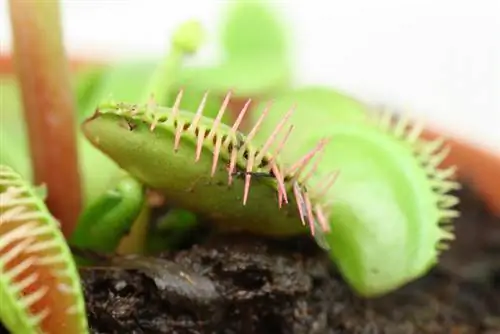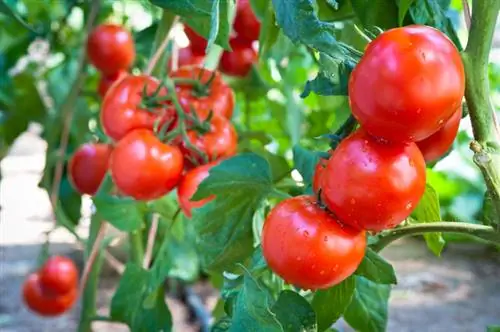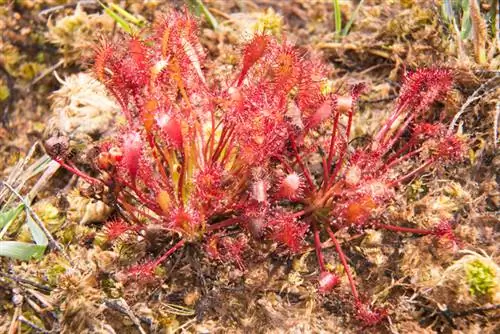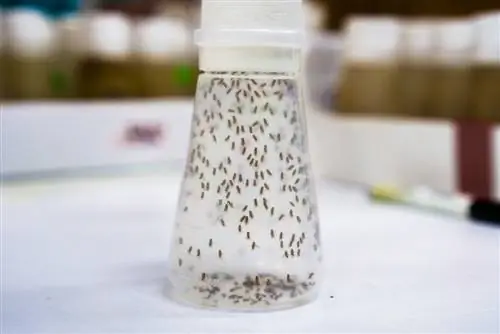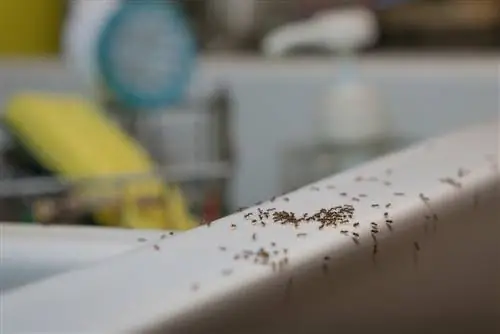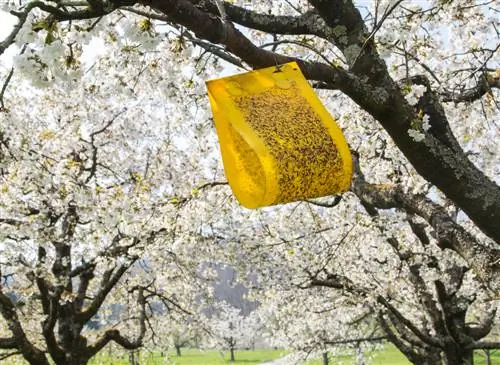- Author admin [email protected].
- Public 2023-12-16 16:46.
- Last modified 2025-01-23 11:20.
Fruit flies like to buzz around the kitchen in summer when fruit and vegetables are stored there. To combat the annoying little insects, carnivorous plants are often recommended. Which carnivores are suitable for combating fruit flies.
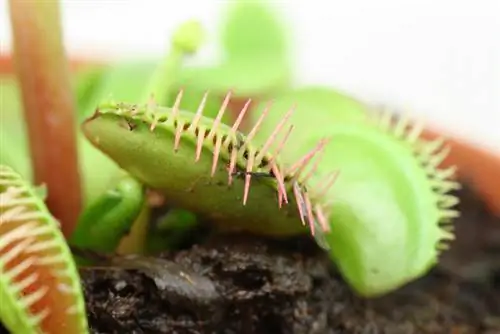
Which carnivorous plants help against fruit flies?
To combat fruit flies with carnivorous plants, butterwort, sundew and Venus flytrap are particularly suitable. They overwhelm the insects with sticky leaves or folding traps and then digest them with secretions.
Which carnivorous plants are suitable for fruit flies?
Fruit flies and mosquitoes can be controlled particularly well by three types of carnivores:
- Fedwort
- Sundew
- Venus flytrap
These plants are also quite suitable for beginners. They remain small and therefore also find space in a kitchen. However, a location that is as bright as possible must be found. In addition, the plant substrate must always be moist.
This is how carnivorous plant control works
The fight against fruit flies is done by the insects sticking to the sticky leaves of butterwort and sundew. A secretion is released that is used to digest fruit flies, so that only the chitinous shell and the legs remain.
The Venus flytrap forms so-called folding traps that look a bit like traps. If a fruit fly settles on the red inner part, the trap slams shut in a split second and traps the prey.
The Venus flytrap then releases a secretion that it uses to digest its prey. This takes a few days, then the trap opens again. The folding trap dies after seven openings at the latest.
The infestation is only reduced, not eliminated
Unfortunately, a severe infestation of fruit flies cannot be eliminated using carnivorous plants alone. The plants' traps only have a limited capacity to absorb. Often only one insect is digested at a time.
Digestion takes several days, only then can the next prey be caught. In the meantime, the fruit flies have mostly multiplied again.
The prey animals must not be too big
What works for fruit flies doesn't work for larger prey like flies. These insects are usually too large for the traps. If insects that are too large are caught, the catching leaves and traps die prematurely.
At most, very large carnivorous plants such as the pitcher plant or the pitcher plant with their calyx are large enough to digest a fly.
Tip
Carnivorous plants thrive even when there are no insects buzzing around in the room, such as in winter. They then obtain their nutrients from the substrate and the stores they have created in their leaves.

